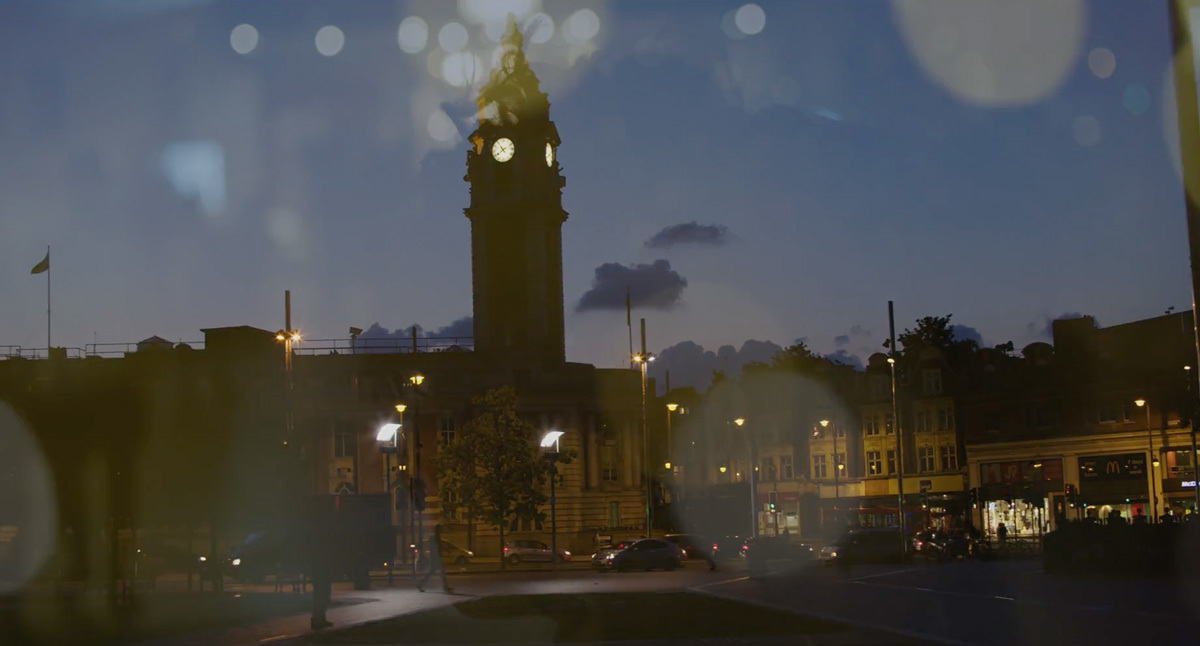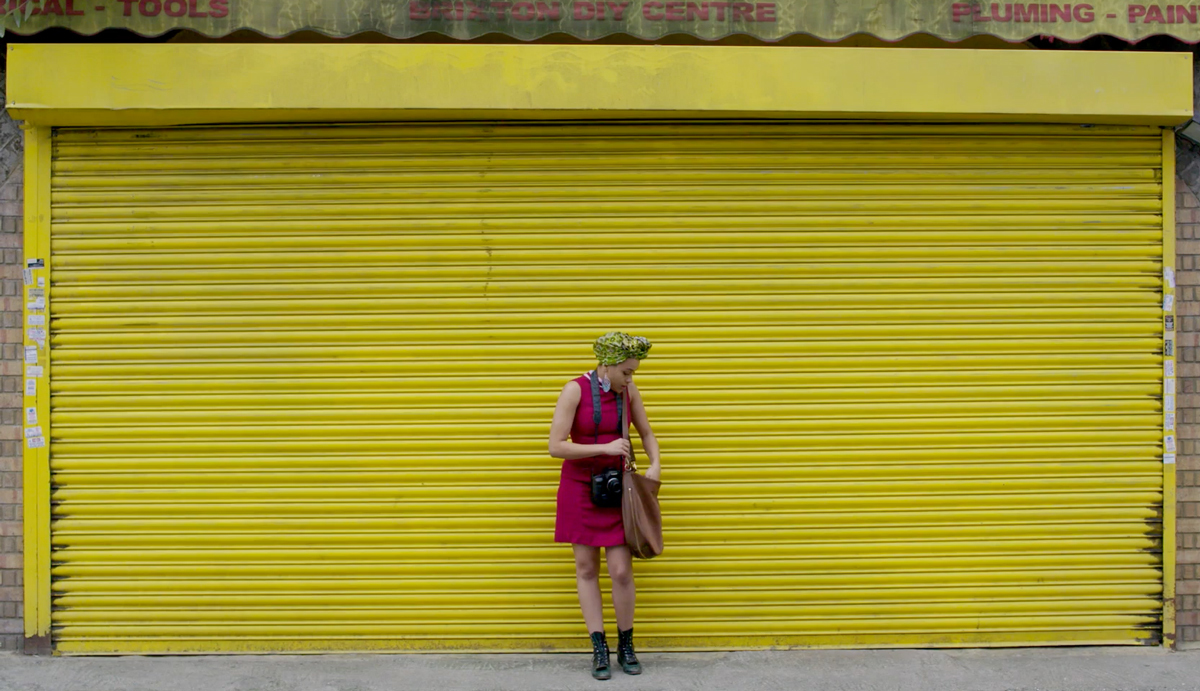Shola Amoo is South London through and through. His first short, Knife Crime London, which he made at Uni, was a personal piece, documenting his friend who had been victim of an attack, giving a different take to the stories in the media at the time. He has always cared about stories from his home borough, wanting to tell stories that give a fresh perspective on the area, stories that reflect the real vitality of the local community.
A graduate of the The Royal Court and Soho Theatre Young Writers Groups, and having three shorts under his belt, he has now made his first feature-length film, A Moving Image. Again, he is focusing on his native South London, asking questions many of us find too uncomfortable to ask about what is happening to Brixton, a place that has been home to African and Caribbean communities starting with the Windrush generation of 1948.
In recent years, Brixton has made headlines with the Reclaim Brixton movement. The aim was simple – stop property developers from carving up the area. Only last month, National Rail developers were granted permission to redevelop the shops located under the railway arches, which have been home to independent retailers since before Amoo was a kid. The gentrification of Brixton is forcing many, including the Afro-Caribbean community, out of the area, as Edison bulb lit cafes and boutique restaurants move in, pushing property prices through the roof, while developers pocket the profits.
A Moving Image tackles gentrification head-on, following the story of stifled artist Nina. Played by Tanya Fear, Nina returns to home after a long time away, before long she is seen as complicit in the gentrification of the area, hoping to produce a work of art that will bring the community in Brixton together – a story that mirrors Amoo’s own life.
Amoo is a man who wants audiences to question the stereotypes, especially about how South London, and the communities that live there have been depicted on screen. His goal is to reflect a reality that is aware of the problems the communities face, but not fall into hackneyed stereotypes. “Whenever I see depictions of South London it has always been incredibly grey and downbeat, grimy and dirty.”
He is right, take Elephant and Castle’s Heygate Estate (now Elephant Park), not far from where Amoo was born at Guy’s Hospital. Amoo refers to Elephant as a place for filmmakers to “Do grit”. It is the setting for gangland dramas and stories of urban decay, like Harry Brown and Attack the Block, as well as Channel 4’s crime drama Top Boy (dubbed the UK’s answer to The Wire). “I think that is such a crazy depiction of the area. Look at an area like Brixton, just look at how colourful, vibrant and full of energy it is. I just can’t understand why you would take such an approach to areas like Brixton, or Peckham or Elephant.”
So Amoo wants to offer up a new image of Brixton, one that more accurately reflects the area’s culture, away from being just a setting of gangster flicks. He’s showing South London as a place that has a vibrant community that is being squeezed into the margins by developers, destroying the areas of Afro-Caribbean heritage. “The big thing for me with A Moving Image was about subverting that depiction of South London”, Amoo continues, “showing the colour and the beauty of the space. It’s always existed before the subject of gentrification came about.”
London on screen isn’t always something Amoo can relate to as a filmmaker, so instead he looked towards New York for inspiration. “My pet peeve with London is that if you think of New York and its depiction as a character, you have these cool, breezy films, we don’t have that here.” For Amoo, London has never found its footing like New York; we don’t have the myriad of depictions that New York has had. Here we get grim kitchen sink dramas, gangland violence, or Richard Curtis romcoms, with little in between, showing a very narrow view distant from what London is really like. “It is hard for me to identify those cool London films. If you are thinking about those early Spike Lee movies or thinking about films like Gimme the Loot, or Fresh, it is hard to think of a filmmaker in the context of London that is like that.”

As well as showing South London in a new light, Amoo’s central goal was to ask some serious questions about the problems Brixton is currently facing. He knows it is a complex issue, with big questions, with no simple answers, and he wanted to reflect that. “It was hard for me to say, f-gentrification. I had to acknowledge that I am part of the problem.” Identity towards where you call home is central to A Moving Image, looking at the story of second-generation African and Caribbean’s who have to reconcile their backgrounds and British identity.
Amoo knows the line between gentrified and gentrifier is often blurred. “When we talk about the language of gentrification we are often talking about people of colour being displaced by white people, that is a general, and very valid, narrative to break down.” Race is something people in London, and across the UK, become squeamish discussing. “I think that we are still in our infancy when it comes to taking about race compared to the US. We have a weird ideology here where we seem to think that if we don’t talk about it, then it doesn’t exist,” says Amoo. “This Black British identity is a real question, what is that? Identity is fluid, and on any given day we can be a hundred different things, but what interests me is how we tap into that. We are not monolithic; we come from lots of different places. We need to ask how we build strength around that and have a real community and dialogue as Black Brits.”
Amoo compares the situation in Brixton with areas in New York. “Brixton and Harlem are so in sync in many ways, where there is a race-based narrative to both. It is more complicated that just white people displacing people of colour, but that is a key part of the narrative.” He goes on, “If you take Harlem, you have affluent black people displacing working class black people, because of the legacy of Harlem and people wanting to live there.” Bringing it back closer to home he adds it is too easy to fall into simple narratives; we need to look further. “We need to broaden the conversation from the one note. We need to find nuances and layers in the conversation about gentrification.”
Credits
Text Joseph Walsh
Screenshots via A Moving Image
